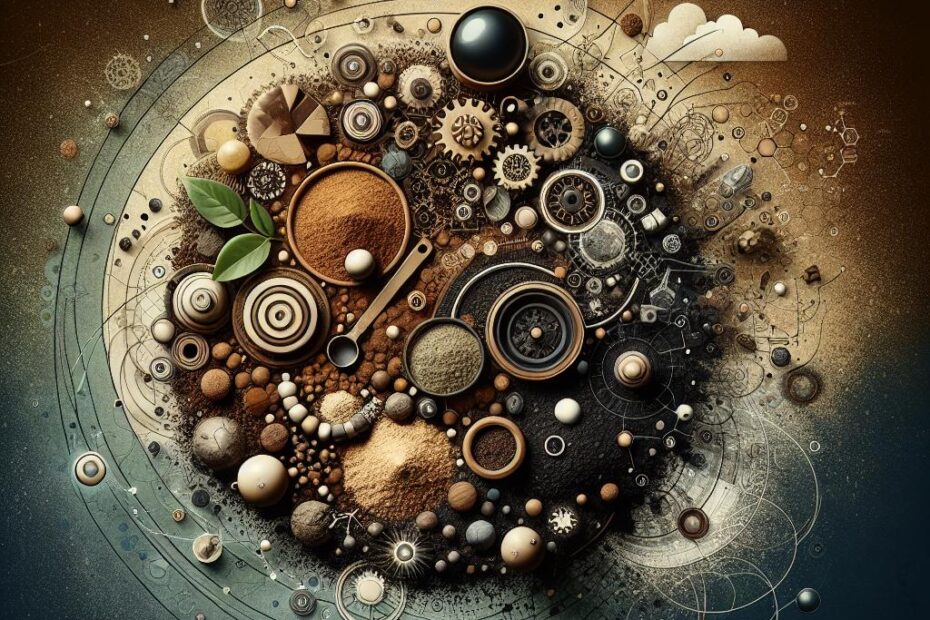Title: Is Soil a Mixture or Compound? Exploring the Composition of Earth’s Foundation
Introduction:
Soil is a vital component of our ecosystem and plays a crucial role in sustaining life on Earth. It provides nutrients to plants, serves as a habitat for a diverse range of organisms, and helps regulate the Earth’s climate. However, when it comes to understanding the composition of soil, there is often confusion over whether it is classified as a mixture or a compound.
In this article, we will delve into the intricate world of soil science to determine whether soil is a mixture, a compound, or perhaps a combination of both. By exploring the various components of soil and their interactions, we can gain a better understanding of this complex and fascinating substance.
Is Soil a Mixture or Compound?
To answer this question, we first need to define what constitutes a mixture and a compound. A mixture is a physical combination of two or more substances, each of which retains its own properties. In contrast, a compound is a substance formed by the chemical combination of two or more elements in fixed proportions, resulting in a new substance with unique properties.
When it comes to soil, it is important to note that soil is composed of a combination of minerals, organic matter, water, air, and living organisms. These components interact with each other in complex ways, contributing to the overall fertility and structure of the soil. Let’s break down the composition of soil further to determine whether it can be classified as a mixture, a compound, or a combination of both:
Components of Soil:
-
Minerals: Soil contains various minerals, such as sand, silt, and clay, which are derived from the weathering of rocks. These minerals provide essential nutrients for plant growth and help determine the soil’s texture and structure.
-
Organic Matter: Organic matter in soil includes decomposed plant and animal material, as well as microorganisms like bacteria and fungi. This organic matter contributes to soil fertility, improves soil structure, and enhances moisture retention.
-
Water: Soil acts as a reservoir for water, regulating its availability to plants and other organisms. Water plays a crucial role in nutrient transport, microbial activity, and plant growth.
-
Air: Soil contains air pockets that allow for oxygen exchange, which is essential for aerobic respiration in plant roots and soil organisms. Adequate aeration is necessary for healthy soil and plant growth.
-
Living Organisms: Soil is teeming with a diverse array of organisms, including earthworms, insects, bacteria, fungi, and other microorganisms. These living organisms play vital roles in nutrient cycling, decomposition, and soil structure formation.
Interaction of Soil Components:
The components of soil interact with each other in dynamic ways, forming a complex ecosystem beneath our feet. For example, minerals provide nutrients for plant growth, while organic matter feeds soil organisms, which in turn help break down organic matter and release nutrients for plants. Water facilitates nutrient transport and microbial activity, while air supports root respiration and the survival of soil organisms.
Soil as a Mixture or Compound:
Based on the definition of a mixture and a compound, it is clear that soil is best classified as a mixture rather than a compound. Soil is a heterogeneous blend of various substances, each of which retains its own properties and can be physically separated from the rest of the soil. Unlike compounds, which are chemically bonded and have fixed compositions, soil components can exist in varying proportions and still retain their individual characteristics.
Benefits of Understanding Soil Composition:
Understanding the composition of soil is essential for farmers, gardeners, environmental scientists, and anyone working with the land. By knowing the different components of soil and how they interact, we can make informed decisions about soil management, fertilization, irrigation, and conservation practices. Healthy soil leads to healthy plants, clean water, and a sustainable environment for future generations.
Conclusion:
In conclusion, soil is a complex and dynamic mixture of minerals, organic matter, water, air, and living organisms. While soil is not a compound in the strict sense of the term, it exhibits properties of a heterogeneous mixture with diverse components that interact to create a fertile and resilient ecosystem. By understanding the composition of soil and its importance to our planet, we can work towards promoting soil health and sustainability for the benefit of all living organisms. Soil truly is the foundation of life on Earth, and we must cherish and protect this precious resource for generations to come.
Through this exploration of soil science, we have gained a deeper appreciation for the intricate world beneath our feet and the vital role that soil plays in sustaining life on Earth. Let us continue to learn, respect, and care for the soil that nourishes us all.
